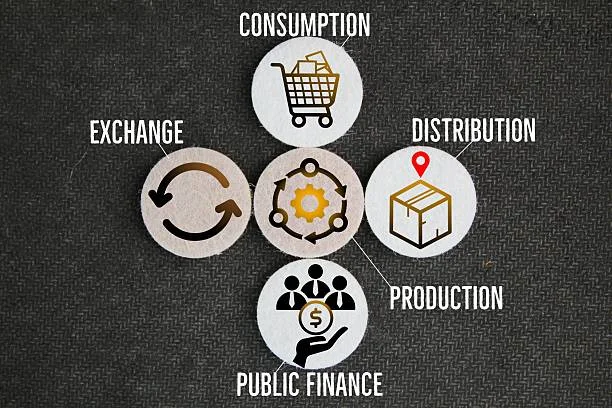TECHNOLOGY
Exploring the Responsibilities of an HR Analyst: A Comprehensive Guide

Human Resource (HR) Analysts are pivotal in optimizing the efficiency and effectiveness of HR functions within an organization. By leveraging data and analytical tools, HR Analysts help companies make informed decisions that drive workforce performance, employee engagement, and overall organizational success. This comprehensive guide will delve into the key responsibilities of an HR Analyst, offering a detailed overview of what this role entails and why it is essential for modern businesses.
The Importance of HR Analysts
In today’s data-driven world, the role of an HR Analyst is more critical than ever. Companies rely on data to understand trends, make strategic decisions, and improve operational efficiencies. HR Analysts use data analytics to uncover insights about workforce dynamics, helping to shape policies and practices that enhance employee satisfaction, productivity, and retention.
Key Responsibilities of an HR Analyst
HR Analysts are responsible for a variety of tasks that contribute to the strategic management of an organization’s human resources. Here are the primary responsibilities of an HR Analyst:
1. Data Collection and Management
One of the fundamental responsibilities of an HR Analyst is to collect, manage, and maintain HR data. This involves:
- Data Gathering: Collecting data from various sources, including employee records, surveys, and performance metrics.
- Database Management: Ensuring that HR databases are up-to-date, accurate, and securely maintained.
- Data Integrity: Implementing processes to ensure the accuracy and reliability of HR data.
Example: An HR Analyst might design and administer employee surveys to gather feedback on workplace satisfaction and engagement. They would then compile this data into a database for further analysis.
2. Data Analysis and Reporting
HR Analysts analyze HR data to identify trends, patterns, and insights that can inform decision-making. This involves:
- Trend Analysis: Identifying trends in employee turnover, hiring, performance, and other key metrics.
- Predictive Analytics: Using historical data to predict future HR needs and challenges.
- Reporting: Creating detailed reports and visualizations to present findings to HR leaders and other stakeholders.
Example: By analyzing turnover rates, an HR Analyst might identify that a particular department has a higher-than-average turnover. They can then investigate further to understand the reasons and recommend solutions.
3. Performance Management
HR Analysts play a crucial role in performance management by evaluating employee performance data and providing insights to improve productivity. This involves:
- Performance Metrics: Developing and tracking key performance indicators (KPIs) for employees and teams.
- Evaluation Systems: Assisting in the design and implementation of performance evaluation systems.
- Feedback Mechanisms: Analyzing feedback from performance reviews to identify areas for improvement.
Example: An HR Analyst might track KPIs such as sales figures, customer satisfaction scores, and project completion rates to assess employee performance. They can then provide recommendations for training or development programs to address performance gaps.
4. Recruitment and Staffing
HR Analysts support the recruitment process by analyzing hiring data and trends to improve recruitment strategies. This involves:
- Candidate Sourcing: Analyzing the effectiveness of different sourcing channels (e.g., job boards, social media, referrals).
- Selection Metrics: Evaluating the success rates of various selection methods (e.g., interviews, assessments).
- Hiring Forecasts: Predicting future staffing needs based on organizational growth and turnover trends.
Example: An HR Analyst might analyze data on past hiring processes to determine which sources have yielded the highest quality candidates. This information can then be used to focus future recruitment efforts on the most effective channels.
5. Compensation and Benefits Analysis
HR Analysts evaluate compensation and benefits data to ensure that the organization remains competitive and fair in its offerings. This involves:
- Market Benchmarking: Comparing the company’s compensation and benefits packages against industry standards.
- Salary Structures: Analyzing internal salary data to ensure equity and competitiveness.
- Benefits Utilization: Assessing the utilization and effectiveness of various employee benefits programs.
Example: An HR Analyst might conduct a market salary survey to ensure that the company’s pay rates are competitive. They can also analyze employee benefits usage to identify which programs are most valued by employees and make recommendations for enhancements.
6. Employee Engagement and Retention
HR Analysts use data to measure and improve employee engagement and retention. This involves:
- Engagement Surveys: Designing and analyzing employee engagement surveys to assess satisfaction and morale.
- Turnover Analysis: Identifying the causes of employee turnover and developing strategies to address them.
- Retention Programs: Evaluating the effectiveness of retention initiatives and recommending improvements.
Example: By analyzing survey data, an HR Analyst might discover that employees are seeking more opportunities for career development. They can then work with HR leaders to design programs that address these needs and improve retention.
7. Compliance and Risk Management
HR Analysts help ensure that the organization complies with labor laws and regulations. This involves:
- Regulatory Compliance: Monitoring and analyzing data related to compliance with employment laws and regulations.
- Risk Assessment: Identifying potential risks related to HR practices and developing mitigation strategies.
- Policy Development: Assisting in the development and implementation of HR policies that align with legal requirements.
Example: An HR Analyst might track compliance with mandatory training programs and ensure that all employees have completed necessary courses. They can also analyze data to identify potential areas of non-compliance and recommend corrective actions.
8. Strategic Planning
HR Analysts contribute to strategic planning by providing data-driven insights that inform HR strategies and initiatives. This involves:
- Workforce Planning: Analyzing workforce data to support long-term planning and organizational development.
- Talent Management: Identifying key talent and developing strategies for succession planning and career development.
- Strategic Initiatives: Supporting the development and implementation of strategic HR initiatives.
Example: An HR Analyst might analyze demographic data to predict future workforce needs and identify potential skill gaps. This information can then be used to develop training programs and recruitment strategies to address these needs.
Leveraging Technology in HR Analysis
The role of an HR Analyst is heavily reliant on technology and data analytics tools. Common tools and platforms used by HR Analysts include:
- HR Information Systems (HRIS): Centralized platforms for managing employee data and HR processes.
- Data Analytics Software: Tools like Excel, Tableau, and Power BI for data analysis and visualization.
- Survey and Feedback Tools: Platforms like SurveyMonkey and Qualtrics for collecting and analyzing employee feedback.
- Performance Management Systems: Software for tracking and managing employee performance and development.
Example: Using an HRIS, an HR Analyst can easily access and manage employee data, while tools like Tableau can help visualize this data to uncover trends and insights that inform strategic decisions.
Conclusion
The responsibilities of an HR Analyst are diverse and multifaceted, requiring a blend of analytical skills, technical expertise, and strategic thinking. By effectively managing and analyzing HR data, HR Analysts provide valuable insights that drive organizational performance and employee satisfaction. Crafting a detailed and comprehensive job description is essential for attracting skilled professionals who can excel in this critical role.
A well-defined job description for an HR Analyst should clearly outline the key responsibilities, required qualifications, and preferred skills. This not only helps in attracting the right candidates but also sets clear expectations and ensures a smooth recruitment process. By following best practices in job description writing and leveraging modern HR technologies, organizations can build a strong HR team that supports their long-term success and growth.
TECHNOLOGY
Your Access, Upgraded: The Professional Benefits of RM1.to

In today’s fast-paced digital economy, professionals are constantly seeking tools that streamline workflow, increase efficiency, and maintain security. One platform that has been gaining attention in the online workforce community is rm1.to. Designed to provide secure and efficient access to specialized digital services, rm1.to is redefining how professionals work, collaborate, and manage tasks in a digital-first environment.
Simplified Access for Professional Tasks
One of the standout benefits of RM1.to is its focus on streamlined access. For many professionals, managing multiple digital tools, accounts, and permissions can be a time-consuming and error-prone process. RM1.to addresses this by offering a centralized platform where users can quickly access the services they need.
Whether it’s specialized data work, content creation, or technical support, RM1.to ensures that professionals can connect with verified service providers efficiently. By eliminating the usual friction associated with task assignment, approval, and payment, users can focus on productivity rather than administrative hurdles.
Enhanced Security for Peace of Mind
Security is a top priority in any professional setting, and RM1.to integrates it as a core feature. Traditional methods of managing access and digital collaboration can leave sensitive information exposed to risk. RM1.to mitigates this with built-in protections for both clients and service providers.
For professionals, this means confidence in every interaction. Payments are securely handled, services are verified, and access is monitored to prevent unauthorized use. The platform’s focus on transparency and accountability ensures that tasks are delivered reliably, reducing disputes and creating a trustworthy environment for all users.
Efficiency That Supports Growth
Another major benefit of RM1.to is its ability to support fast, efficient workflows. In the modern digital workforce, speed is often as critical as accuracy. RM1.to allows professionals to delegate micro-tasks quickly without worrying about complex onboarding or verification processes.
By combining rapid access with secure, verified transactions, the platform allows individuals and teams to scale their operations efficiently. Professionals can take on more projects, meet deadlines faster, and maintain high-quality standards—all without compromising security or accountability.
Flexibility for Diverse Professional Needs
The versatility of RM1.to is another reason it appeals to professionals. The platform is not limited to a single industry or type of task. From creative projects and technical support to data analysis and research, RM1.to can accommodate a wide range of professional requirements.
This flexibility enables professionals to adapt to evolving workloads, delegate tasks efficiently, and access specialized expertise on-demand. The platform acts as a bridge, connecting users with services that would otherwise require time-intensive searches or additional hires.
Building Trust Through Transparency
Trust is essential in any professional relationship, particularly in digital environments where users may never meet in person. RM1.to fosters trust through clear service descriptions, structured workflows, and feedback mechanisms. Both clients and service providers can review performance and maintain accountability, which strengthens collaboration and minimizes misunderstandings.
For professionals, this transparency not only ensures reliability but also allows them to make informed decisions when choosing services or partners. The platform’s structure encourages ethical practices and responsible usage, creating a professional ecosystem built on trust.
Conclusion
RM1.to offers a combination of security, efficiency, and flexibility that makes it a valuable tool for today’s digital professionals. By simplifying access, ensuring secure transactions, supporting scalable workflows, and fostering trust, the platform enables users to focus on what truly matters: delivering high-quality work and achieving professional goals.
In a world where digital tasks are growing in complexity and volume, RM1.to represents a meaningful upgrade in how professionals manage their work. Its features provide the support, speed, and reliability needed to thrive in a competitive digital workforce, making it a go-to platform for those seeking secure and efficient access to specialized services.
TECHNOLOGY
The Power of Curation: Ultimateshop’s Quality-First CC Strategy

In the digital world, access to information is only valuable when it is accurate, relevant, and well-organized. For platforms dealing with credit card (CC) data, this principle is even more critical. Raw data dumps may contain enormous amounts of information, but without proper curation, their utility ultimateshop is limited and their reliability questionable. ultshop.mobi has distinguished itself by adopting a quality-first strategy, using careful curation to transform large datasets into actionable, trustworthy resources quality-first CC.
The Limitations of Raw Data
Many platforms prioritize volume over precision, offering massive collections of CC information that are often outdated, duplicated, or poorly formatted. While this approach may appeal to users seeking large datasets, it comes with significant drawbacks. Errors, inconsistencies, and irrelevant entries increase the risk of flawed analysis or inefficient workflows. For developers, researchers, and testers, these issues mean extra time spent cleaning and verifying data, reducing productivity and increasing the potential for mistakes.
Ultimateshop recognized that the key to meaningful value is not simply the quantity of data but the quality. By prioritizing accuracy, organization, and usability, the platform provides users with curated datasets that are ready for immediate, reliable use quality-first CC.
Curation as a Core Strategy
At the heart of Ultimateshop’s approach is curation—a deliberate process of selecting, verifying, and refining data to ensure it meets strict quality standards. Every CC entry is evaluated for validity, accuracy, and relevance before inclusion. Duplicates are removed, formatting is standardized, and outdated or invalid entries are filtered out.
This rigorous curation process ensures that users receive datasets they can trust. Rather than sorting through thousands of questionable entries, users can focus on applying the information to research, testing, or legitimate project work. The curated approach turns potentially chaotic datasets into structured, usable resources.
Enhancing Usability Through Organization
Quality-first curation goes beyond validation—it also emphasizes organization and accessibility. Ultimateshop structures data in a way that is intuitive and user-friendly. Categories, tags, and consistent formatting make it easy to navigate even large datasets quality-first CC.
This thoughtful organization saves users significant time and reduces the risk of errors. For tasks that require precision and speed, such as testing payment systems or analyzing trends, the ability to access well-structured, reliable data is invaluable. Ultimateshop’s curated lists are not only accurate—they are actionable.
Trust and Reliability as Key Differentiators
In an industry where credibility is crucial, Ultimateshop’s quality-first strategy establishes trust. Users can rely on the platform to deliver accurate, up-to-date information without the frustration of sifting through unreliable entries. By emphasizing curation, Ultimateshop ensures that its datasets are consistently dependable, setting it apart from competitors that focus solely on volume.
Furthermore, this commitment to quality supports ethical and secure usage. Curated, verified data minimizes the risk of errors that could lead to misuse or security vulnerabilities, aligning the platform with responsible digital practices quality-first CC.
Continuous Improvement and Adaptation
Ultimateshop’s strategy is not static. The platform continuously updates and refines its curated datasets, incorporating new information while removing outdated entries. This dynamic approach ensures that users always have access to relevant, accurate data, allowing the platform to adapt to evolving needs and maintain its high standards over time.
Conclusion
Ultimateshop demonstrates the transformative power of curation in the CC data space. By prioritizing quality over quantity, verifying entries, organizing information effectively, and maintaining ongoing refinement, the platform provides reliable, actionable datasets that enhance efficiency and trust.
TECHNOLOGY
The Hidden Pathways of Vclubshop’s Digital Marketplace

In today’s interconnected world, the digital underground has become a sophisticated ecosystem where stolen data, illegal services, and cybercrime tools are exchanged. Among the platforms that have emerged in this shadowy landscape is vclubshop, a marketplace known for facilitating the trade of compromised data and other illicit digital goods vclub shop. Understanding how such marketplaces operate can help individuals and organizations strengthen their cybersecurity posture and respond effectively to emerging threats.
1. Exploring the Structure of Vclubshop
Vclubshop functions similarly to a legitimate e-commerce platform, but with an illicit purpose. Its structure includes several key elements:
Product Listings – Stolen data, including login credentials, payment information, and personal identity records, is organized for sale.
Seller Ratings and Reviews – Like legal marketplaces, buyers assess sellers based on feedback and reputation, which fosters trust in an otherwise anonymous environment.
Secure Transactions – Cryptocurrencies are typically used to maintain anonymity and reduce the traceability of purchases.
Anonymity Tools – Users often rely on VPNs, encryption, and other privacy measures to avoid detection by authorities.
By mimicking the structure of legitimate marketplaces, platforms like Vclubshop create a sense of order that allows illicit transactions to occur efficiently.
2. The Lifecycle of Data in the Marketplace
Stolen data rarely remains isolated; it passes through multiple stages before reaching end-users:
Acquisition – Hackers obtain data through breaches, phishing, malware, or social engineering.
Verification and Packaging – Data is often checked for validity and organized into packages for sale.
Marketplace Listing – The verified data is uploaded to platforms like Vclubshop.
Purchase and Exploitation – Buyers use the data for identity theft, financial fraud, or account takeovers, or resell it in other underground markets.
This pipeline shows how a single breach can have far-reaching consequences in the digital ecosystem.
3. Why Vclubshop Persists
Several factors contribute to the resilience of underground marketplaces:
High Demand – Stolen data fuels identity theft, fraud, and cyberattacks, creating a continuous market.
- Global and Decentralized Operations – Transactions cross borders, making enforcement and prosecution challenging.
Advanced Anonymity Measures – Cryptocurrency payments and encrypted communication systems protect both buyers and sellers.
These conditions create a marketplace that is difficult to disrupt and continuously adapts to law enforcement efforts.
4. The Risks to Individuals and Organizations
Even if someone is not directly interacting with platforms like Vclubshop, stolen information can impact them indirectly:
Account Compromise – Credentials sold on such marketplaces can be used to take over online accounts.
Financial Fraud – Payment information can be exploited for unauthorized transactions.
Identity Theft – Personal data can be used to create fraudulent documents or access services.
Awareness of these risks is the first step toward prevention.
5. Strategies for Protection
Protecting yourself and your organization from the effects of marketplaces like Vclubshop requires proactive measures:
Use unique, strong passwords for all accounts.
Enable multi-factor authentication wherever possible.
Monitor financial statements and credit reports regularly.
Keep software and devices updated to patch security vulnerabilities.
Educate users and employees about phishing and social engineering attacks.
For organizations, regular cybersecurity audits, network monitoring, and incident response planning are essential to minimizing exposure.
6. Understanding the Digital Underground
While platforms like Vclubshop operate outside the law, analyzing their structure and operations helps demystify the digital underground. By understanding the hidden pathways through which stolen data travels, individuals and businesses can take informed steps to secure sensitive information. Cybersecurity today is not optional—it is a critical part of navigating an increasingly digital world.

 BUSINESS9 months ago
BUSINESS9 months agoBrand Visibility with Imprint Now and Custom Poly Mailers

 HEALTH8 months ago
HEALTH8 months agoHappy Hippo Kratom Reviews: Read Before You Buy!

 HOME IMPROVEMENT9 months ago
HOME IMPROVEMENT9 months agoThe Do’s and Don’ts of Renting Rubbish Bins for Your Next Renovation

 LIFESTYLE9 months ago
LIFESTYLE9 months agoThe Disciplinary Wives Club: Spanking for Love, Not Punishment

 ENTERTAINMENT1 month ago
ENTERTAINMENT1 month agoExploring the Kristen Archives: A Treasure Trove of Erotica and More

 TECHNOLOGY8 months ago
TECHNOLOGY8 months agoDizipal 608: The Tech Revolution Redefined

 BUSINESS10 months ago
BUSINESS10 months agoExploring the Benefits of Commercial Printing

 HEALTH5 months ago
HEALTH5 months agoYour Guide to Shedding Pounds in the Digital Age












